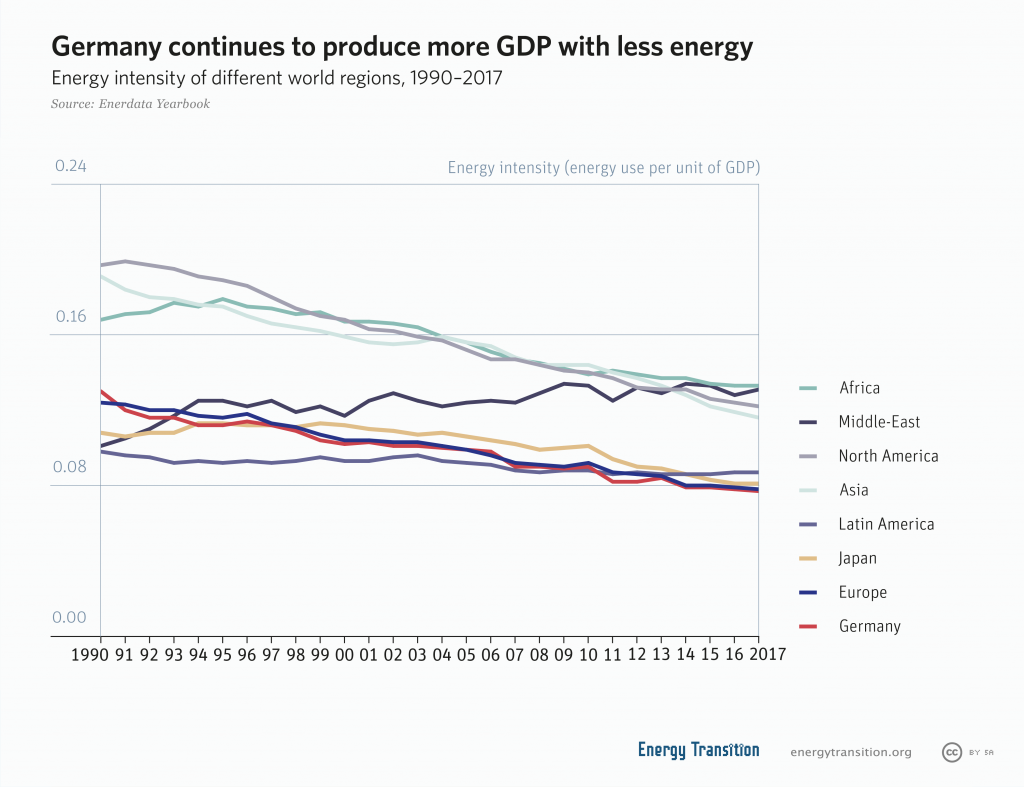Energy intensity refers to how much energy is needed to produce an output. For countries, this is calculated according to the GDP. In Germany, energy-intensive industries are those who consume 10GW a year – they are exempt from the renewable energy surcharge.
Energy intensity
Over the past two decades, economic growth has generally outstripped the growth in energy consumption and greenhouse gas emissions in most industrialized nations. The International Energy Agency estimated that energy intensity – the amount of energy needed to produce a unit of GDP– has been falling at a rate of around 2 percent a year since 2010. 2016’s “energy productivity bonus” (the difference between actual GDP and the GDP that would have been generated if energy intensity was at year’s level) was $USD 2.2 trillion.

In Germany, energy productivity increased 63 percent from 1990 to 2016, as primary energy use was reduced by around 10 percent.
Energy intensive industries in Germany
In Germany, firms that consume a lot of energy and face international competition are largely exempt from the surcharge to cover the cost of renewable power. To be eligible, companies have to consume at least 10 GWh per year to fall into the category of “privileged industry.”
In 2011, some 300 energy intensive firms paid 0.05 cents per kWh to cover the cost of German feed-in tariffs for 90 percent of their power and only paid the full surcharge for the first 10 percent; everyone else paid the full surcharge extra for all of their power. Furthermore, if a firm consumes at least 100 GWh per year and power costs make up more than 20 percent of total production costs, it does not even have to pay the full surcharge for the remaining 10 percent of its consumption.